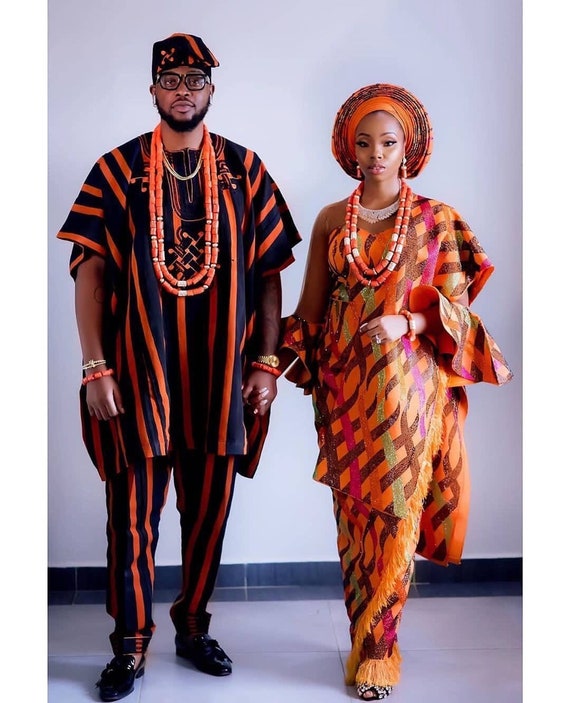Before the influence of colonial rule on the African continent, fashion had its sway on the people. It was a language well-spoken and common among Africans. Textile designs and production were a way to communicate status, occasion, and celebrations.
The Yoruba people of Nigeria, in West Africa, call it “Aso-oke” which literally means “top cloth”. This textile is hand-made with intricate designs, colors, and patterns.

Can it fall into the same category of internationally recognized luxury fashion? This will depend solely on a genuine definition of luxury; which is said to be particularly characterized by a high price point then, the use of unique materials, designs and particularly the craftmanship involved in the design process.
The Aso-Oke as remained a core identity for the Yoruba tribe and as such they have preserved the process, techniques, designs and the craftmanship have been passed down from generations to generation.

The skills are handed over delicately through the process called ‘apprenticeship’ where persons in their late teens experience for a duration of years where they learn everything it takes to master the skill and trade of Aso-Oke business.
In modern day Nigeria, the Yoruba people have upgraded the designs, that is patterns and colors of their glorious textile, and it has resulted in a new variation of contemporary Aso-Oke. The textile as also been classified into different textures and thickness such that it can be used to make ‘foreign’ designs such as blazers. The finesse and craftmanship in the production process as however been preserved as it is an identity of the Yoruba people that can never be upturned.
The price points of this apparel over the years have fluctuated due to a quick multiplication of craftmanship and a high demand for the textile. However it is still preserved for special occasions such as weddings, coronations, and other ceremonies.
There are three types of Aso-Oke;

- Sanyan: woven from anaphe wild silk and cotton yarns
- Alaari: woven with either synthetically or locally grown cotton and shinning threads, sometimes with perforated patterns
- Etu: bears dark indigo colours with tiny white stripes noted for their simplicity
Each of these types of Aso-Oke require different combinations of material, design, colors and specific craftmanship. In addition, the process and time line for creating these fabric is also detailed oriented and required focus and adequate time. The craftsmen put their hearts in their work.
What more can be required of an AFRICAN LUXURY TEXTILE.

